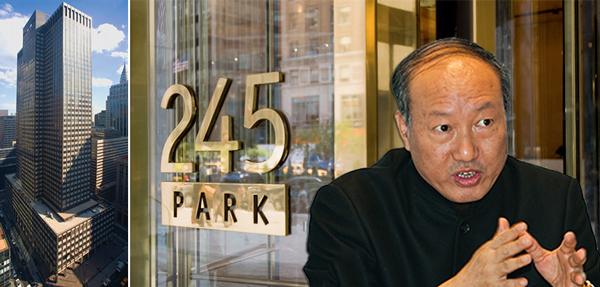Trending
Building sales on the wane
First-quarter numbers disappoint, but brokers say a slowdown is only natural after several banner years

The city’s investment-sales market limped listlessly through the first few months of 2017, with dollar volume falling by more than 50 percent from the same time last year. What’s more, the slump now encompasses the entire city — even pockets that showed signs of resiliency toward the end of 2016 have seen once-fluid sales congeal.
“Dollar volumes were abysmal,” said Cushman & Wakefield’s Bob Knakal, who added that the first quarter “puts us on pace to be down 51 percent from last year.” The dip from 2015 is even more striking: down 63 percent.
The first quarter of 2017 saw 846 properties trade hands for a total dollar volume of $7.06 billion, according to data from Cushman. That was a drop of 33 percent from the 1,258 properties sold the same time a year ago, and a 55 percent decline from the $15.52 billion worth of deals inked in the first quarter of 2016.
If the first quarter’s figures are annualized, 2017 will end with a sales total of $28.3 billion, less than half 2016’s $57.8 billion in sales. One bright spot, Knakal noted, is that values are up 6 percent across the city.
This may not, however, be much cause for cheer. When transaction volume drops and pricing rises, it’s a sign that there’s a disconnect between sellers and buyers on what pricing should be, which usually leads to fewer sales, at least in the near future.
The first quarter’s lethargy comes as no surprise to industry observers who watched deals dwindle last year as buyers tightened their purse strings in response to a wide range of concerns, including oversupply in various sectors of the residential market, out-of-control pricing, the presidential election and climbing interest rates.
Scott Latham, co-head of the capital markets group at Colliers International, said the slump is particularly noticeable as first-quarter activity usually includes a substantial number of deals that didn’t get across the finish line by year’s end.
“Last year, from the beginning pretty much through midyear, you had a confluence of events that put a lot of people on the fence,” he said. “This year started without a lot of hangover from the prior year, which typically makes up the bulk of the first quarter’s activity.”
Not all hope is lost, though. There are some big deals in the pipeline that could give the market a jolt later this year, such as Chinese conglomerate HNA Group’s $2.21 billion acquisition of 245 Park Avenue, which is expected to close in the coming months.
But the impact is likely to be limited, as even submarkets that performed buoyantly compared to their neighbors during last year’s slowdown have since fallen in line with the rest of the market. At the end of 2016, dollar volumes were down in Manhattan south of 96th Street, Brooklyn and the Bronx. But in Northern Manhattan and Queens, sales totals were up 15 percent and 26 percent respectively last year.
In the first quarter of 2017, though, dollar volumes above 96th Street fell 19 percent, to $527,000, and in Queens they fell 58 percent, to $544,000.
Northern Manhattan was the only submarket that saw an increase in the number of properties sold. There were 75 deals in the first quarter of this year, compared to 74 during the same period last year.
But while 2017 is shaping up to be another slow year, it should be noted that even if the current trend continues, it may well be in line with historic averages. During the 10-year period ending in 2016, the Manhattan investment-sales market averaged just below 300 transactions totaling $31 billion, according to Colliers International’s Stephen Shapiro. While there’s always hope that market surges will go on indefinitely, it’s rarely the case that they last for more than a few years.
“It’s generally a $30 billion-to-$40 billion market,” Shapiro said. “While 2015 and 2016 were exceptionally active years, investment-sales activity in 2017 will likely still fall within the range of historical averages for Manhattan.”




